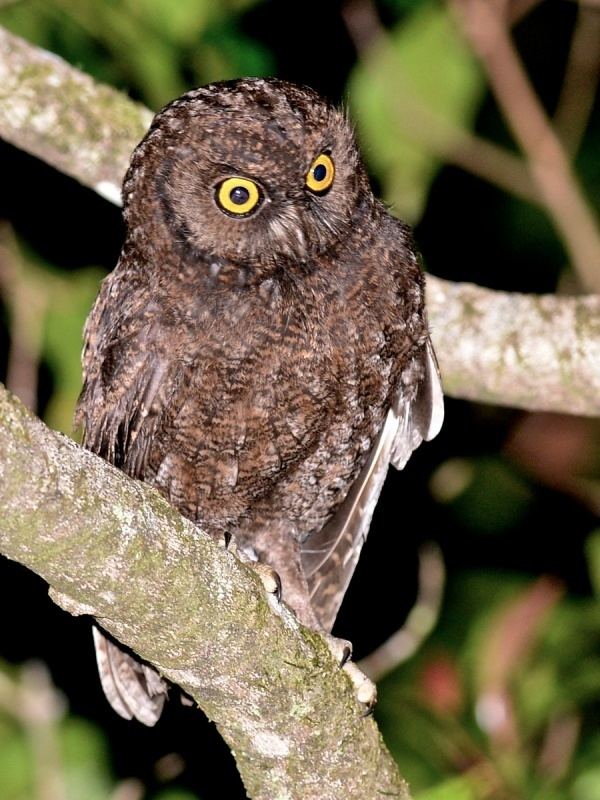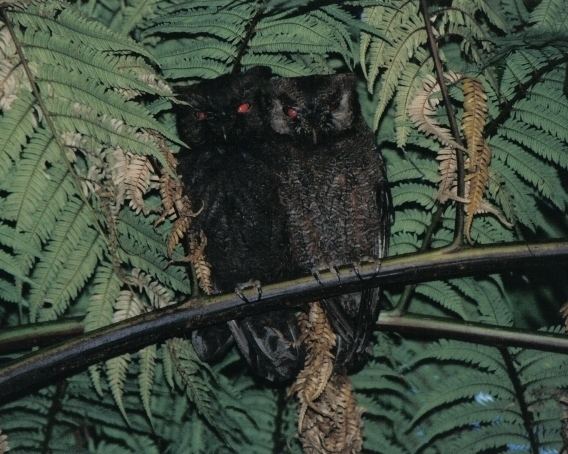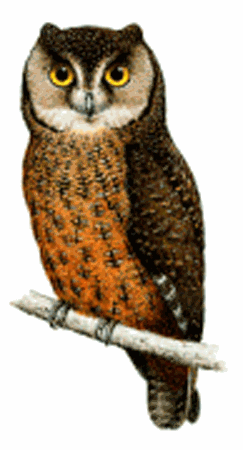Class Aves Family Strigidae Scientific name Otus capnodes | Phylum Chordata Order Strigiformes Genus Otus Rank Species | |
 | ||
Similar Moheli scops owl, Karthala scops owl, Mayotte scops owl, Pemba scops owl, Mindoro scops owl | ||
The Anjouan scops owl (Otus capnodes) is an owl endemic to the island of Anjouan in the Comoro Islands.
Contents

Description

The Anjouan scops owl occurs in grey and rufous colour phases and has very small ear tufts compared to other scops owls. The grey form is sooty grey with fine buff bars on the head and neck, a dark brown face with fine streaks and brown underparts with very fine brown streaks and vermiculations. The tail and flight feathers are sooty grey. The rufous form is browner and the marking contrast more with the plumage. Body length is 15 cm (5.9 in) and the wingspan is 45 cm (18 in).
Voice

The call of the Anjouan scops owl is a distinctive drawn-out whistle, which is repeated often with by short interludes, which has been likened to the "pee-oo" call of the grey plover.
Distribution and habitat

The Anjouan scops owl is found only on the island of Anjouan, Ndzuani in the local language, where it occurs in the remaining fragments of native upland forest, degraded forest and plantations. It appears to be dependent on large trees situated on steep slopes with cavities for nesting and roosting.
Habits
Little known but probably nests and roosts in tree cavities and feeds mainly on insects.
Conservation and status
This species was rediscovered in June 1992, after an absence of records dating back to 1886. It has an estimated population of less than 400. It is classified as "Critically Endangered" because its range is restricted to such a small area, which is being rapidly deforested. Bristol Conservation and The Science Foundation have currently conducted surveys on the island to determine how many owls remain.
